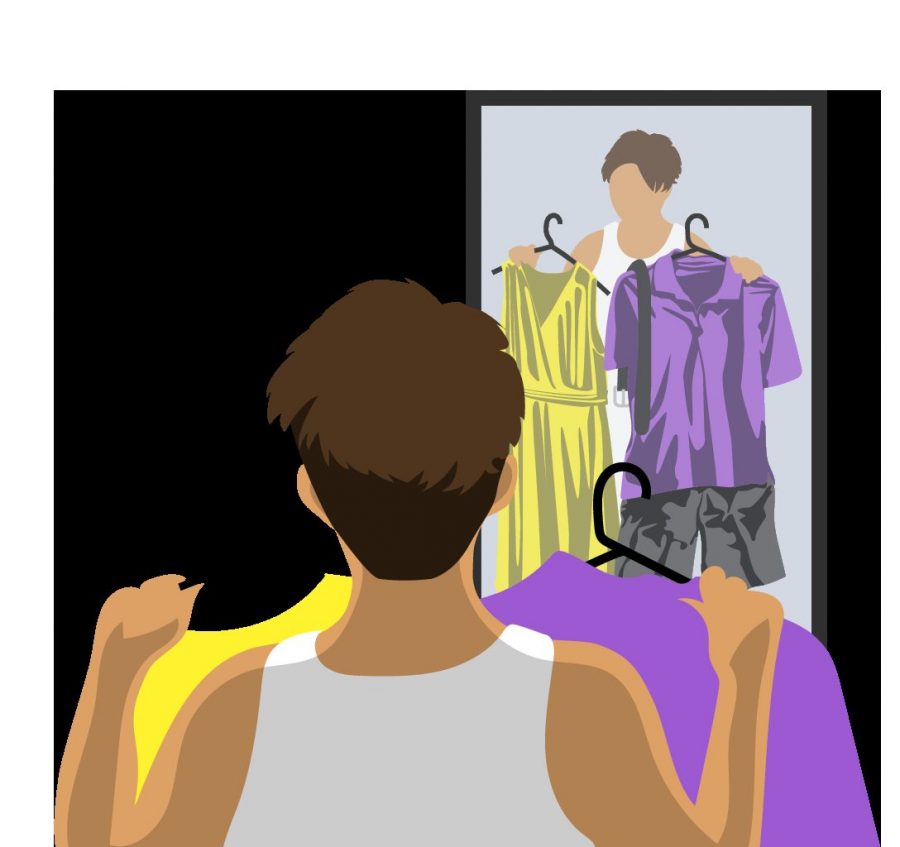Although many students are in favor of abolishing the dress code or heavily amending it, the administration has made it clear that it is not going anywhere. If the dress code is here to stay, it needs to work for every student at Trinity, including nonbinary students.
With the current gender-specific dress code, there are certain rules that apply to one side. In the boys’ dress code, for example, students are required to wear belts and tuck in shirts. For students who may be male but prefer nonbinary pronouns and clothing, this presents a challenge. Can they have longer hair? Are they allowed to wear earrings? With one general dress code, all of these questions could be answered effectively in one place.
The dress code has general guidelines focused on cleanliness and hygiene, but past this it breaks into gendered rules.
When a faculty member confronts a student about an untucked shirt or a missing belt, a nonbinary student is often put in a precarious situation — either take the violation or out themselves. Not every student is comfortable openly sharing their identity, and they shouldn’t be put in that position. Feeling the pressure to conform or out themselves can create gender dysphoria.
According to National Health Service, U.K. gender dysphoria is defined as “…a term that describes a sense of unease that a person may have because of a mismatch between their biological sex and their gender identity. This sense of unease or dissatisfaction may be so intense it can lead to depression and anxiety and have a harmful impact on daily life.”
This also doesn’t just apply to one or two students. Gender diverse people make up a significant amount of the population. According to a study by the Williams Institute in June 2021, 1.2 million Americans identify as nonbinary. Within that same study, 53% report being bullied, and an overwhelming 94% of nonbinary adults have considered suicide, and 39% have attempted suicide.
According to Physicians Postgraduate Press, Inc., suicide rates are higher in gender diverse people compared to the rest of the population. Gender diverse students face a number of challenges already, including gender discrimination, family rejection, and internalized transphobia.
The school dress code shouldn’t be one of these. Every Trinity student should feel safe and accepted on campus. Physical safety is well protected at Trinity, but students’ emotional safety seems to be on the backburner. The current dress code is leaving them out in the cold.
“If you’re not comfortable, that is what is going to impede your learning,” said Austen Guber, the president of Diversity Club, “not a ‘distracting outfit.’”
Trinity could instead enforce one across-the-board dress code, a unanimous list of “all students should/should not” as opposed to “girls” and “boys.” This allows room for all students to adhere to the dress code, and creates gender euphoria for any gender-fluid or nonbinary students.
“I just feel like [a gendered dress code is] unnecessary,” an anonymous nonbinary student said. “I don’t think that clothes have gender.”
Recently, the on-campus Diversity Club has put forth a new, reformed, gender-neutral dress code that’s meant to do just that.
“The reform is about making a more inclusive, guided dress code policy,” Guber said. “Because it affects everyone on campus…It should just be more relatable.”
Both students and faculty alike should be pushing for equality on our campus. Reforming our dress code for all students is an easy first step for just that.
“That’s what I would love to see: a simple, easy to follow, easy to enforce dress code that everybody feels like they can follow,” Dean of students Kelly Aull said.
To respect our nonbinary students, we need to offer them the same representation as every other student on campus. Trinity’s mission statement claims that the mission is to develop individuals that lead in a changing society, and that’s exactly what Diversity Club is aiming to do with a reformed dress code. But with the current gender-conforming dress code, that mission statement is being tainted with an archaic, close-minded set of rules.
“This is how we express ourselves — through what we wear, how we put our hair, and how we dress,” Guber said.
Schools are meant to foster personal and academic growth in students, but the dress code impedes that. School policies should facilitate growth, and students can’t grow if they’re hiding their identity. The Trinity family is supposed to be the on-campus support system for the whole student body, not just the students who fit into the binary. Bottom line, there’s a lot more we could do to make students feel safe and accepted in all areas.







